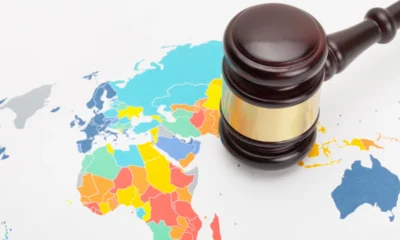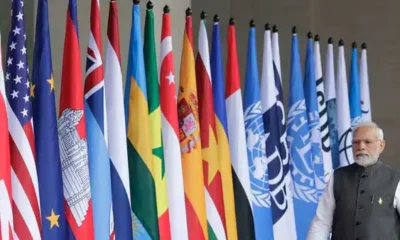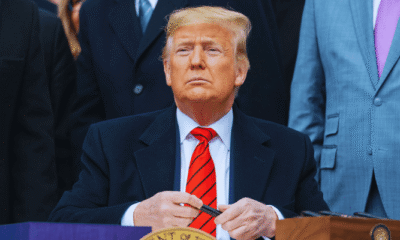American News
Zorhan Mamdani: The Painful Path to the New York Mayoralty

Paris (Imran Y. CHOUDHRY) :- Former Press Secretary to the President, Former Press Minister to the Embassy of Pakistan to France, Former MD, SRBC Mr. Qamar Bashir analysis : Zorhan Mamdani, the first South Asian, first Muslim, and first immigrant in serious contention for the mayorship of New York City, is no ordinary candidate. At just 38 years of age, with a radiant forehead, a disarming smile, and eyes that sparkle with conviction, he has become a symbol of possibility in a system long rigged against outsiders. Yet from the moment he clinched victory in the Democratic primary—stunning the political elite—his journey has been met with a resistance unparalleled in the annals of modern American municipal politics.
Born in Kampala, Uganda, and raised in the U.S. from the age of seven, Mamdani personifies a generation molded by the American dream yet scarred by systemic exclusion. His ascent through the ranks of local politics was not accidental—it was forged in the fire of grassroots mobilization, tireless door-knocking, and fearless messaging grounded in the everyday struggles of working-class New Yorkers. He achieved the unthinkable when he defeated former Governor Andrew Cuomo in the Democratic primary—a titan of influence, wealth, and elite connections with roots that run all the way to Washington.
That upset victory sent shockwaves through both political parties. The Democratic establishment, accustomed to anointing successors, scrambled to contain the insurgency. The GOP, meanwhile, saw in Mamdani not merely a political opponent, but a threat to the status quo they’ve long defended. From the very next day, the attacks began—not measured critiques, but demonizations. President Donald Trump, in a now-viral clip alongside Israeli Prime Minister Benjamin Netanyahu, dismissed Mamdani as a “lunatic communist.” Netanyahu, with a chuckle, added, “He’s mayor now?” The smirk wasn’t just dismissive—it was chilling. The machinery of institutional power had been activated.
The backlash intensified rapidly. Jewish advocacy groups labeled him an anti-Semite for his pro-Palestinian stance and previous associations with slogans like “globalize the Intifada,” despite his repeated clarifications that his critiques were of government policies, not religious communities. Right-wing media and conservative evangelicals branded him a “radical Islamic sympathizer.” Threats escalated, targeting his safety, his citizenship, and his family. What began as political opposition devolved into personal vilification, an orchestrated campaign to break his spirit and discredit his legitimacy.
In one televised appearance, Mamdani struggled to hold back tears while reading aloud hateful messages sent to his loved ones. These weren’t ordinary criticisms; they were dehumanizing attacks meant to remind him that, in the eyes of the power elite, his existence in public life was conditional, his dreams illegitimate. The vitriol implied a brutal truth—that a South Asian, Muslim immigrant may sweep floors or drive a cab in New York, but aspiring to lead it is a step too far.
As the general election looms, the obstacles grow more daunting. His opponents are flush with millions in campaign cash, much of it from shadowy donors. Spoiler candidates have emerged overnight, designed to divide progressive votes. The city’s convoluted electoral procedures create fertile ground for legal contestation, recounts, and administrative sabotage. There is even the looming threat of federal scrutiny—an extreme, but not unimaginable, tactic in today’s charged political climate.
But through all this, Mamdani’s base is only growing stronger. He has galvanized a diverse coalition: working mothers in the Bronx, Bangladeshi storeowners in Queens, idealistic youth in Brooklyn, and Harlem’s reform elders. They see in him more than a candidate—they see a champion for those long ignored, a voice that echoes their frustrations, and a leader who walks beside them, not above them.
However, with this support comes danger—the danger of being baited into battles not his to fight. Much of the controversy surrounding Mamdani’s campaign has nothing to do with garbage collection, housing shortages, transit reform, or public safety—the issues that matter to New Yorkers. Instead, his critics have shifted focus to foreign policy questions irrelevant to the mayoral office: Will he visit Israel first? Does he support the Palestinian Intifada? Would he arrest Netanyahu or Modi if they visit the city? These are traps—not debates. They are lures designed to shift the narrative from potholes and public housing to geopolitics and ideological warfare, where Mamdani can be painted as divisive and dangerous.
This is where discipline is required. Mamdani must rise above these distractions and resist the temptation to respond to every provocation. His focus must remain on New York—the city’s crumbling infrastructure, unaffordable rents, stagnant wages, and racial disparities in policing and healthcare. His promise lies not in foreign affairs, but in fixing failing subways, reducing gun violence, expanding after-school programs, and restoring dignity to the underserved. The best rebuttal to hate is competence. And the best response to slander is service.
Still, even if he wins in November, the road ahead remains treacherous. Victory will be followed by a confirmation process with the city’s Election Commission and a transition period where outgoing officials—some openly hostile—may seek to delay or undermine his authority. His formal assumption of office in January 2026 is not guaranteed until every bureaucratic hurdle is cleared. The system, with all its invisible levers, may yet try to disqualify him—not through ballots, but through bureaucracy.
This battle is no longer just about a mayor’s office. It’s about whether America truly believes in what it professes: liberty and justice for all. When an American citizen—who pays taxes, pledges allegiance, and serves his community—is treated as a suspect rather than a statesman, the nation must pause. When his ambition is questioned not on merit but on ethnicity, the illusion of inclusion stands exposed.
Yet there is hope. At the street level, the cynicism of institutions meets the decency of people. Millions of New Yorkers see Mamdani not as a foreigner, but as one of their own—raised on city streets, shaped by its rhythms, and determined to heal its wounds. His campaign is not merely a political movement; it is a referendum on whether democracy still functions when tested.
If Zorhan Mamdani wins, it will be more than personal triumph. It will affirm that this nation can still defy its darker instincts. That a campaign built on subway fares, small donations, and sheer willpower can beat back dynasties, donors, and demagogues. But if he is denied his victory through media manipulation, electoral trickery, or manufactured scandal, it will be a stark indictment of the American promise—a sign that we have failed to rise above the narrowness of race, religion, and riches.
Let sanity prevail. Let New York be guided not by fear, but by fairness. Let this beautiful country—with all its promise and all its pain—choose a path of justice, inclusion, and integrity. Because the world is watching. And Zorhan Mamdani’s march may well be America’s last great test.
American News
America Falls Victim to Its Own Pre-Emptive Doctrine
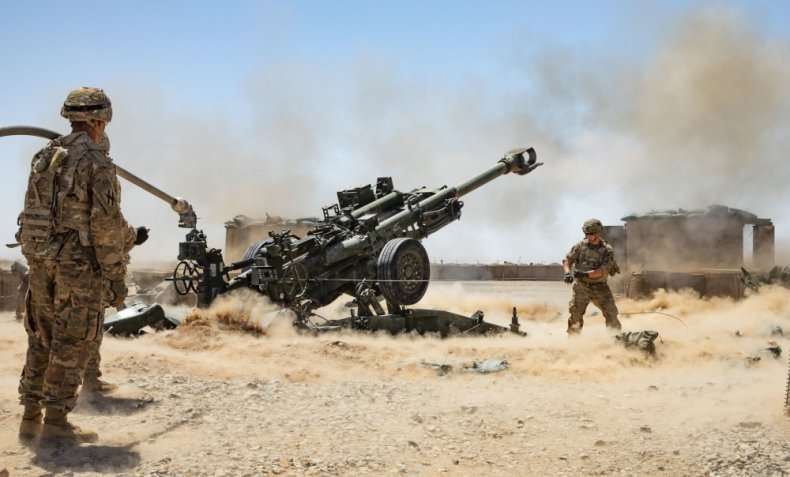
Paris (Imran Y. CHOUDHRY) :- Former Press Secretary to the President, Former Press Minister to the Embassy of Pakistan to France, Former MD, SRBC Mr. Qamar Bashir analysis : The doctrine of preventive and pre-emptive strike, once defended as a tool to neutralize danger, has instead evolved into one of the most destabilizing forces of the modern era. It was misused in Iraq, misapplied in Afghanistan, refined by Israel across the Middle East, and has now begun reshaping U.S. policy in the Western Hemisphere with dangerous momentum. A strategy designed to stop future conflict is in reality manufacturing perpetual instability, radicalization, and blowback that reaches far beyond the battlefield. Today it resurfaces in Venezuela and Colombia, where U.S. kinetic actions mirror the same flawed logic that once plunged entire regions into chaos.
Washington now accuses Venezuela’s leadership of facilitating narcotics trafficking—including fentanyl, cocaine, heroin, and synthetic opioids—into the United States. Acting on these claims, U.S. forces have destroyed 21 Venezuelan maritime vessels, including a mini-submarine, multiple fishing boats, and coastal carriers allegedly tied to smuggling networks. Venezuela has condemned these strikes as “acts of war,” and nationwide protests demand retaliation. As naval deployments increase and rhetoric hardens, the region inches toward confrontation.
Colombia faces parallel pressure. American intelligence asserts that Colombian networks have expanded trafficking corridors and that the government has not done enough to stop them. In response, U.S. forces have conducted over 50 targeted seizure-and-destruction missions against Colombian-linked maritime and aerial assets. Colombia’s leadership has called these actions coercive violations of sovereignty, warning that repeated strikes “may compel defensive measures.” In both nations, U.S. interdictions are no longer viewed as anti-drug operations but as the early stages of a pre-emptive war doctrine extending into sovereign territory.
This rapid escalation is not new. It mirrors the same pattern witnessed in Iraq, Libya, and Syria, where preventive-strike logic produced catastrophic long-term consequences. After the 2003 Iraq invasion—justified by fabricated claims of weapons of mass destruction—extremist movements multiplied. The world soon witnessed the Madrid bombings of 2004 (193 killed), London bombings of 2005 (52 killed), Paris attacks of 2015 (130 killed), Brussels bombings of 2016 (32 killed), and the Nice massacre (86 killed). These were not isolated tragedies. They were the direct blowback of destabilizing entire societies under the banner of preventive security.
The United States has suffered its own share of domestic consequences. The Boston Marathon bombing, the Orlando nightclub massacre, the San Bernardino attack, and the Fort Hood shooting all emerged from radicalization fueled by wars that inflamed emotions, grievances, and ideological anger across continents. Western intelligence agencies acknowledged that the Iraq War accelerated global extremism more than any single event since World War II.
This pattern continued recently with the fatal shooting of a U.S. National Guard soldier and the wounding of another by an armed gunman who, according to initial assessments, carried deep personal grievances and emotional wounds closely tied to broader social and psychological turmoil. His act, though individual in execution, reflects a growing trend: internal radicalization born not only from ideology but from a society increasingly shaped by violence abroad and polarization at home.
When nations normalize pre-emptive violence externally, elements within their own society begin to internalize the same logic—that grievance can justify aggression, that perceived threats demand immediate force, and that violence is a legitimate expression of injury. This tragedy is a domestic echo of a doctrine whose psychological fractures now reach into American neighborhoods and military families.
These external and internal patterns converge with a new and overlooked threat: America’s own criminal ecosystem, which is deeply intertwined with the consequences of its foreign and domestic policies. According to law-enforcement estimates, there are approximately 172,000 cartel-affiliated and illegal-gang operatives inside the United States, embedded in trafficking, distribution, logistics, and underground financial networks. If aggressive external crackdowns in Venezuela and Colombia disrupt these supply chains, tens of thousands of operatives inside the United States will suddenly lose their income, hierarchy, and criminal ecosystems.
History shows that men trained in covert movement, armed logistics, intimidation, and criminal coordination rarely retire when their networks collapse. Some may reintegrate into society, but many—dispossessed, angry, and stripped of status—may evolve into more violent, unpredictable actors. A displaced criminal workforce of 172,000 individuals, skilled in violence and trafficking, represents a potential flashpoint for domestic terrorism far greater than the maritime vessels destroyed abroad. Without rehabilitation, education, economic inclusion, and cultural transformation, enforcement alone may ignite a domestic insurgency that grows silently inside American borders.
Meanwhile, abroad, the preventive doctrine continues generating diplomatic and strategic losses. Israel’s long-term reliance on pre-emptive strikes has led to unprecedented isolation from Europe, legal indictments, suspended arms transfers, and deep economic damage. Its military strength remains intact, but its global legitimacy has deteriorated. The United States is experiencing similar erosion. At the United Nations, America increasingly stands alone defending actions viewed internationally as violations of sovereignty. Allies abstain rather than stand with Washington. Latin American anger intensifies as U.S. forces strike vessels and aircraft in waters they consider their own.
If left unchecked, these actions could fracture hemispheric relations for decades. A region historically tied to the United States may transform into a zone of resistance and asymmetric retaliation. Every destroyed boat, every violated border, every wounded soldier, every act of internal violence becomes part of a growing web of instability linking foreign miscalculations with domestic consequences.
A sustainable solution requires more than interdictions, seizures, or kinetic displays. Preventive violence cannot cure the social, economic, and cultural conditions that fuel crime and extremism. Real security emerges from deeper reforms—education, opportunity, community rebuilding, regional cooperation, and domestic social healing. Without addressing underlying fractures, the United States risks creating the very threats it seeks to eliminate, both abroad and within its borders.
The world must move toward outlawing preventive and pre-emptive strikes. Nations that violate sovereignty must face automatic, impartial economic and diplomatic consequences enforced by mechanisms beyond the reach of political manipulation.
Humanity cannot afford another Iraq, another Libya, another Syria—or a Venezuelan and Colombian conflict born from speculative intelligence and unilateral force. Nor can the United States afford more tragedies like the killing of its own National Guard soldier at the hands of a deeply wounded man shaped by a fractured national psyche.
Pre-emptive doctrine does not provide safety. It creates destruction, resentment, and internal instability. Only when nations reject the impulse to strike first and invest instead in long-term social transformation—at home and abroad—will the world begin to heal from the damage this doctrine has unleashed.
American News
USA Has Normalised Collective Punishment
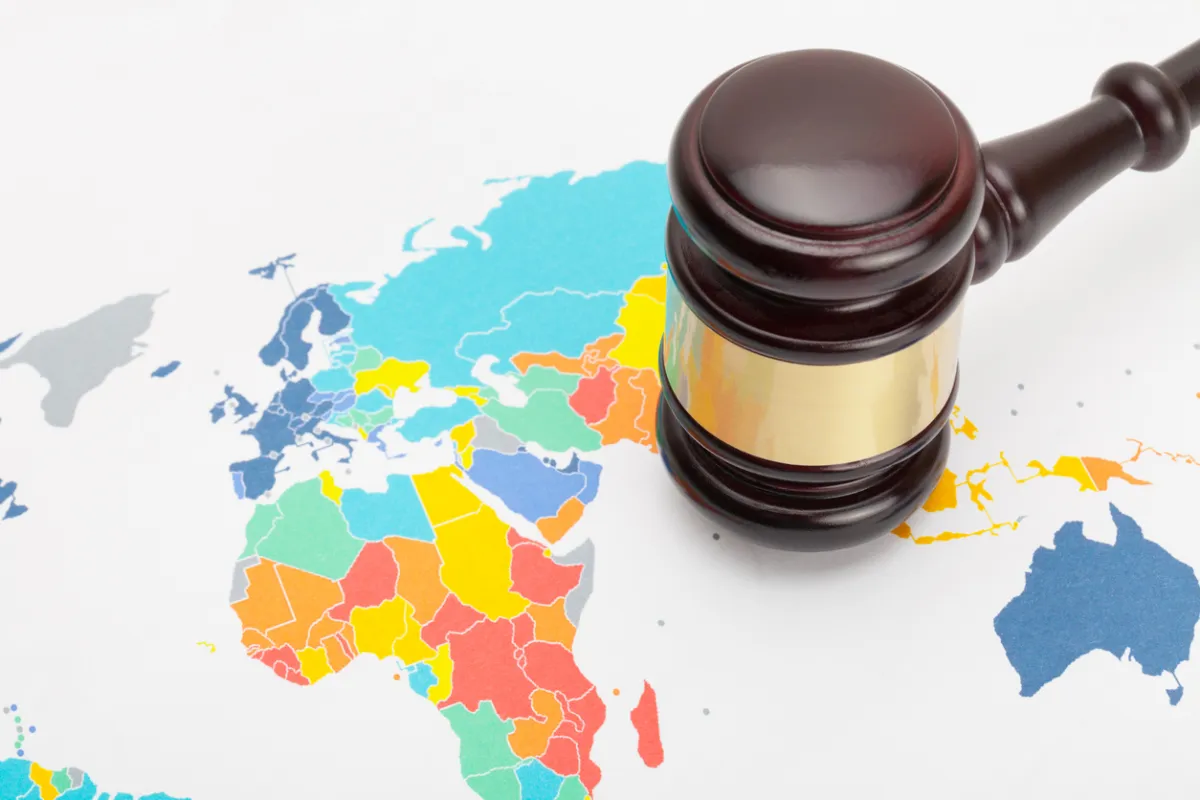
Paris (Imran Y. CHOUDHRY) :- Former Press Secretary to the President, Former Press Minister to the Embassy of Pakistan to France, Former MD, SRBC Mr. Qamar Bashir analysis : From the dawn of human civilization, long before Judaism, Christianity, Islam, or Buddhism emerged to reshape the moral foundations of society, humanity lived under a brutal and irrational law: when one person committed a crime, entire tribes, cities, and nations were punished. The crime of an individual became the burden of thousands. A conflict between two men could trigger decades of warfare. A single act of adultery could unleash generational blood feuds. Ancient history is filled with examples of wars ignited by the wrongdoing of a few but fought by tens of thousands who had no connection to the original offense. Around 1200 BCE, the legendary Trojan War erupted because of the actions of one couple—Paris and Helen—but ended with the deaths of an estimated 40,000 to 100,000 warriors and the destruction of Troy. In 490 BCE, the entire city of Miletus was destroyed by the Persian Empire in retaliation for the Ionian Revolt, though only a handful of rebels had participated in the initial uprising. In 586 BCE, the kingdom of Judah was crushed and Jerusalem destroyed because King Zedekiah rebelled against Babylon; tens of thousands were exiled for the decision of one ruler. These ancient precedents reveal an era dominated by collective vengeance rather than individual responsibility.
When Judaism arrived, the moral code began to shift. The Torah introduced the revolutionary principle that “the children shall not be put to death for the sins of the father,” establishing that punishment must be confined to the perpetrators. Christianity later reinforced this concept through the teachings of Jesus, emphasizing forgiveness and individual accountability. Islam, too, declared unequivocally in the Quran that “no soul shall bear the burden of another,” and that punishment must be proportionate and directed only toward the guilty. These religions attempted to end the age-old normalization of collective punishment. Yet despite these divine instructions, humanity repeatedly drifted back into the primitive instinct of retaliating against entire populations instead of targeting the individuals responsible for the crime.
Modern history, too, is littered with catastrophic examples of collective punishment. When one person or one small group acted, nations responded with wars that killed millions. During World War I, the assassination of a single man—Archduke Franz Ferdinand—on June 28, 1914, by a 19-year-old Serbian nationalist, led to a conflict that killed over 20 million people. In World War II, the rise of a few extremist leaders drove humanity into the deadliest war in history, killing an estimated 70–85 million people between 1939 and 1945. In 1937, after one Chinese soldier went missing near the Marco Polo Bridge, Japan launched a full invasion that resulted in the deaths of 300,000 civilians in Nanjing alone. Again and again, the scope of punishment far exceeded the scope of the crime.
The twenty-first century has unfortunately normalized collective punishment in new and devastating forms. After the 9/11 attacks of September 11, 2001—committed by 19 individuals—America understandably pursued all those who plotted, supported, facilitated, or financed the attack. Justice against the perpetrators was necessary and morally justified. But the response soon expanded far beyond those responsible. The invasion of Afghanistan in October 2001 resulted in more than 170,000 Afghan civilian deaths over two decades. In March 2003, Iraq was invaded even though Iraq had no involvement in 9/11; the war killed between 300,000 to 600,000 Iraqis and displaced millions. Libya was bombed in 2011, leaving 30,000 dead. Syria’s civil war, ignited by a small protest in 2011, eventually claimed over 500,000 lives and displaced more than 12 million people—half of the population. These tragedies illustrate a dark truth: the punishment for the crime of a few was extended to entire nations.
In the most recent and heartbreaking episode, the October 7, 2023 Hamas attack on Israel killed around 1,200 Israelis and took approximately 250 hostages—a horrific and indefensible act that demanded justice. Yet the response unleashed upon the civilians of Gaza escalated into one of the deadliest campaigns of the 21st century. By late 2025, more than 70,000 Palestinians had been killed, 75 percent of the population displaced, nearly all hospitals destroyed, food and medicine blocked, and children left freezing under plastic sheets in harsh winter rain. Families buried under rubble, newborn babies dying without incubators, entire neighborhoods turned to dust—this was not justice against the perpetrators but a sweeping punishment against an entire population for the crimes of a few.
The world watched collective punishment become normalized once again. Instead of targeting militants, the response treated every man, woman, and child in Gaza as equally punishable, an approach that contradicts not only international law but the core moral principles of Judaism, Christianity, Islam, and every civilized system of justice ever established.
And now, in November 2025, America risks repeating this ancient mistake within its own borders. After a lone gunman killed one National Guard soldier and severely wounded another, the United States had every right and duty to pursue the killer and anyone who supported or facilitated him. The safety of American soldiers and citizens must always come first, and no one can dispute that justice must be delivered swiftly and firmly. But instead of targeting the perpetrator and his network, sweeping executive orders were issued that affected millions of immigrants who had no connection whatsoever to the crime. Immigration processing was halted. Asylum cases were frozen. Green card holders and legal permanent residents—people who have committed no crime, who work hard, pay taxes, raise families, and contribute to America’s GDP—were suddenly labeled suspicious, stereotyped as criminals, and threatened with deportation.
Collective punishment once again overshadowed common sense. American immigrants, who statistically commit fewer crimes than native-born citizens, found themselves trapped under suspicion because of the actions of one man. These families fled economic collapse, persecution, and violence in their home countries; now they face being thrown back into the very instability they escaped. Their dreams, their years of sacrifice, their contributions to the U.S. economy have been jeopardized by an act they neither supported nor participated in.
The logic is simple and eternal: punish the guilty, not the innocent. Every major religion, every moral code, and every civilized legal system supports this principle. Collective punishment is not justice—it is a return to the darkest chapters of human history. It destroys trust, divides societies, and creates new cycles of hatred.
The United States is a great nation with strong institutions and a history of self-correction. It has the capacity to distinguish between a criminal and an entire community. It can choose a path guided by law, reason, and fairness rather than anger. As President Trump often says, his movement is a movement of “common sense.” But common sense does not support punishing millions for the crime of one. Common sense teaches us to hold the perpetrator accountable, not innocent families. Common sense demands proportionality, fairness, and justice—not blanket retaliation.
The question now is whether America, and indeed the world, will learn from history. Will we continue to repeat the ancient mistakes of punishing nations for the crimes of individuals, or will we finally embrace the moral clarity that has been taught to us for thousands of years? The answer will determine whether humanity advances toward justice—or falls backward into its brutal past.
American News
The G-20 Summit Sans America

Paris (Imran Y. CHOUDHRY) :- Former Press Secretary to the President, Former Press Minister to the Embassy of Pakistan to France, Former MD, SRBC Mr. Qamar Bashir analysis : The 2025 G-20 Summit in South Africa will be remembered not only for the historic decisions taken, but equally for the loud, symbolic silence created by the absence of President Donald Trump and the United States’ high-level delegation. It was a vacuum that everyone felt, a political absence that lowered the temperature of the event, diminished its traditional stature, and yet, paradoxically, empowered the rest of the world to move forward without waiting for Washington’s approval. A gathering once shaped, dominated, and animated by American leadership unfolded without it — and the world did not stop. In fact, it moved with surprising confidence and determination, proving for the first time in decades that global cooperation no longer revolves around a single pole of power.
Trump’s official explanation for skipping the summit was both extraordinary and controversial. He alleged that South Africa was maltreating, harassing and killing its white population of Britain, France, Europe, and the United States origin,” and that the U.S. would therefore boycott the gathering in protest.
This justification stunned diplomats. The South African president and prime minister engaged in frantic outreach to convince Washington to participate at its traditional strength, but their efforts came to nothing. The United States remained absent, and the G-20 moved on. That moment alone signaled a shift: the world’s most influential economies were no longer willing to freeze or dilute their agenda because America chose not to show up.
In that vacuum, the G-20 delivered several major breakthroughs. Africa achieved its long-awaited elevation as a permanent force within the grouping. Its seat was strengthened with new mandates for development, debt restructuring, and large-scale infrastructure support — recognition that Africa is no longer a peripheral player but a central actor in the global economy. The summit also adopted the Global Debt Relief Framework 2.0, a comprehensive mechanism in which China, the United States (from the working-level side), and Europe aligned on a unified system for restructuring debt for developing nations. For the first time, the world’s largest creditors agreed on the principles of transparency, fair burden-sharing, and predictable timelines — a milestone that benefited dozens of struggling economies.
One of the most transformative decisions was the adoption of a global AI and digital governance pact. The world finally agreed on a shared code of conduct for artificial intelligence development, data transparency, cybersecurity protocols, and cross-border data flows. This was an agenda point expected to be heavily influenced by the United States, yet its absence did not hinder progress. The pact revealed a deeper truth: the world’s technological future no longer depends solely on Silicon Valley’s blessing. Beijing, Brussels, Pretoria, New Delhi, and Brasília demonstrated their ability to shape norms that will define the digital age.
Yet the most ambitious and visionary outcome was the creation of a $120 billion Green Energy Transition Fund. This fund aims to help developing and least-developed countries move away from fossil fuels and adopt solar, wind, hydrogen, and advanced battery-storage systems. It promises not only financing, but also technology transfer, expertise, and capacity building. The symbolism was profound: while Washington debates climate strategies through the prism of tariffs and industrial protection, the G-20 chose global environmental responsibility as a collective mission, marking a sharp contrast with America’s inward shift.
The summit also produced a roadmap to reduce global tariffs — a direct counterpoint to Donald Trump’s aggressive tariff wars. Leaders agreed that escalating tariffs undermine supply chains, inflate consumer prices, suffocate export markets, and weaken global economic stability. By committing to reduce trade barriers and revive the core principles of the World Trade Organization, the G-20 openly challenged the direction of U.S. trade policy and reaffirmed that globalization, though evolving, is far from dead.
Food security emerged as another defining pillar. The G-20 endorsed a multi-continental fertilizer and grain corridor network that would ensure developing nations have the ability not only to access essential agricultural inputs but also to build their own production capacity. The initiative aims to strengthen local seed development, introduce climate-resilient crops, and reduce dependency on vulnerable supply chains. It was a reminder that global hunger is not caused by scarcity, but by inequity, mismanagement, and geopolitics — and that collective action remains the only antidote.
Pandemic preparedness also received unprecedented attention. The G-20 agreed on a universal pathogen-sharing system, vaccine production guarantees for countries that cannot afford them, and the creation of global emergency stockpiles. COVID-19 had exposed the brutal reality that the world was divided between vaccine “haves” and “have-nots.” This summit promised not to repeat that inequality, committing to a global health shield that can activate instantly in the face of new threats.
Even tax justice — long a contentious issue — saw real progress. The G-20 endorsed a crackdown on tax evasion and illicit financial flows, expanding automatic exchange of banking data and creating stronger digital taxation systems capable of identifying hidden wealth and offshore transfers. It was a direct strike against corruption, financial secrecy, and the long-standing loopholes that have drained developing nations of trillions.
What is extraordinary is that these decisions, perhaps some of the most consequential in G-20 history, were made in the absence of the United States. Washington’s non-participation deprived the summit of its traditional weight, but it also gave the rest of the world a rare freedom — a chance to act without American vetoes, delays, or political bargaining. For the first time, the G-20 showed that global governance can continue even when America chooses not to lead.
This absence also reflects a deeper American decline. The United States has already withdrawn from key UN bodies, distanced itself from multilateral structures, and ceded leadership of global organizations to rising powers such as China and India. Across Europe and beyond, intellectuals are questioning the legitimacy of veto powers at the UN Security Council, arguing that one nation should not be allowed to overturn a resolution supported by nearly 200 states. The principle of unilateral veto is increasingly viewed as anti-democratic and incompatible with a modern, multipolar world. If that power is eventually dissolved, the United States — which relies heavily on the veto to protect its geopolitical interests — would suffer the greatest strategic loss.
Economists across Europe are also sounding alarms about the U.S. dollar. They note that gold prices have nearly doubled since Trump intensified tariffs, a sign that global confidence in the dollar as a reserve currency is eroding. History teaches that such erosion is initially slow and subtle — as with the British pound — until one day it becomes sudden and irreversible. A reserve currency survives on three pillars: military strength, predictable governance rooted in rule of law, and a robust, stable economy. Today, America’s economic dominance is shrinking, its global leadership is receding, its institutional predictability is weakening, and its geopolitical influence is being challenged by China, India, Russia, and an increasingly assertive Global South.
The South Africa G-20 Summit was therefore more than a diplomatic event; it was a mirror held up to the United States. It is a wake-up call for a nation that once led the free world with confidence but is now drifting into isolation, controversy, and self-inflicted decline. If the United States hopes to restore its leadership, stabilize its currency, and reclaim its global relevance, it must reverse its inward retreat, rebuild alliances, re-enter global institutions, and embrace cooperation instead of confrontation. Only then can it regain the trust of a world that, for the first time, has shown it can move forward without America — and perhaps, if necessary, beyond it.
-

 Europe News9 months ago
Europe News9 months agoChaos and unproven theories surround Tates’ release from Romania
-

 American News9 months ago
American News9 months agoTrump Expels Zelensky from the White House
-

 American News9 months ago
American News9 months agoTrump expands exemptions from Canada and Mexico tariffs
-

 American News9 months ago
American News9 months agoZelensky bruised but upbeat after diplomatic whirlwind
-

 Art & Culture9 months ago
Art & Culture9 months agoThe Indian film showing the bride’s ‘humiliation’ in arranged marriage
-

 Art & Culture9 months ago
Art & Culture9 months agoInternational Agriculture Exhibition held in Paris
-

 Pakistan News5 months ago
Pakistan News5 months agoComprehensive Analysis Report-The Faranian National Conference on Maritime Affairs-By Kashif Firaz Ahmed
-

 Politics9 months ago
Politics9 months agoUS cuts send South Africa’s HIV treatment ‘off a cliff’






